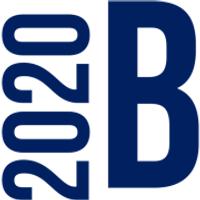
2020 Bulkers Ltd
OSE:2020


| US |

|
Johnson & Johnson
NYSE:JNJ
|
Pharmaceuticals
|
| US |

|
Berkshire Hathaway Inc
NYSE:BRK.A
|
Financial Services
|
| US |

|
Bank of America Corp
NYSE:BAC
|
Banking
|
| US |

|
Mastercard Inc
NYSE:MA
|
Technology
|
| US |

|
UnitedHealth Group Inc
NYSE:UNH
|
Health Care
|
| US |

|
Exxon Mobil Corp
NYSE:XOM
|
Energy
|
| US |

|
Pfizer Inc
NYSE:PFE
|
Pharmaceuticals
|
| US |

|
Palantir Technologies Inc
NYSE:PLTR
|
Technology
|
| US |

|
Nike Inc
NYSE:NKE
|
Textiles, Apparel & Luxury Goods
|
| US |

|
Visa Inc
NYSE:V
|
Technology
|
| CN |

|
Alibaba Group Holding Ltd
NYSE:BABA
|
Retail
|
| US |

|
JPMorgan Chase & Co
NYSE:JPM
|
Banking
|
| US |

|
Coca-Cola Co
NYSE:KO
|
Beverages
|
| US |

|
Walmart Inc
NYSE:WMT
|
Retail
|
| US |

|
Verizon Communications Inc
NYSE:VZ
|
Telecommunication
|
| US |

|
Chevron Corp
NYSE:CVX
|
Energy
|
Utilize notes to systematically review your investment decisions. By reflecting on past outcomes, you can discern effective strategies and identify those that underperformed. This continuous feedback loop enables you to adapt and refine your approach, optimizing for future success.
Each note serves as a learning point, offering insights into your decision-making processes. Over time, you'll accumulate a personalized database of knowledge, enhancing your ability to make informed decisions quickly and effectively.
With a comprehensive record of your investment history at your fingertips, you can compare current opportunities against past experiences. This not only bolsters your confidence but also ensures that each decision is grounded in a well-documented rationale.
Do you really want to delete this note?
This action cannot be undone.

| 52 Week Range |
97.4118
149
|
| Price Target |
|
We'll email you a reminder when the closing price reaches NOK.
Choose the stock you wish to monitor with a price alert.

|
Johnson & Johnson
NYSE:JNJ
|
US |

|
Berkshire Hathaway Inc
NYSE:BRK.A
|
US |

|
Bank of America Corp
NYSE:BAC
|
US |

|
Mastercard Inc
NYSE:MA
|
US |

|
UnitedHealth Group Inc
NYSE:UNH
|
US |

|
Exxon Mobil Corp
NYSE:XOM
|
US |

|
Pfizer Inc
NYSE:PFE
|
US |

|
Palantir Technologies Inc
NYSE:PLTR
|
US |

|
Nike Inc
NYSE:NKE
|
US |

|
Visa Inc
NYSE:V
|
US |

|
Alibaba Group Holding Ltd
NYSE:BABA
|
CN |

|
JPMorgan Chase & Co
NYSE:JPM
|
US |

|
Coca-Cola Co
NYSE:KO
|
US |

|
Walmart Inc
NYSE:WMT
|
US |

|
Verizon Communications Inc
NYSE:VZ
|
US |

|
Chevron Corp
NYSE:CVX
|
US |
This alert will be permanently deleted.
2020 Bulkers Ltd
2020 Bulkers Ltd. engages in the operation of dry bulk carriers. The firm owns as subsidiaries 2020 Bulkers I Inc and 2020 Bulkers II Inc in Liberia. Entities are parts to shipbuilding contract with New Times Shipbuilding Co. Ltd. for construction and delivery of Newcastlemax dry bulk vessel. The Company’s main shareholders comprise Magni Partners and Titan Opportunities Fund.

2020 Bulkers Ltd. engages in the operation of dry bulk carriers. The firm owns as subsidiaries 2020 Bulkers I Inc and 2020 Bulkers II Inc in Liberia. Entities are parts to shipbuilding contract with New Times Shipbuilding Co. Ltd. for construction and delivery of Newcastlemax dry bulk vessel. The Company’s main shareholders comprise Magni Partners and Titan Opportunities Fund.
Profit & Revenue: 2020 Bulkers posted Q3 net profit of $9.8 million, operating revenues of $19.3 million, and EBITDA of $14.2 million.
Dividend: The company declared $0.54 per share in dividends for July–September and $0.19 per share for October.
Vessel Sales: Agreements were signed to sell four vessels for a total of $281.75 million, all to be delivered in Q1 2026.
Strong Market: The average time charter equivalent (TCE) rate was $35,100 per day in Q3 and $36,000 per day in October, supported by robust bauxite and iron ore exports.
Low Costs & Resilience: The company highlighted its industry-low cash breakeven of $11,500 per day and the ability to generate profit in almost any market environment.
Positive Outlook: Management expects strong bauxite and iron ore volumes—especially from Guinea and Simandou mine—to keep the market firm, potentially reducing usual Q1 seasonality weakness.
Fleet Strategy: Decisions on capital from vessel sales and future fleet plans remain open, with management emphasizing transparency and shareholder focus.































